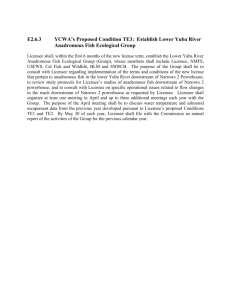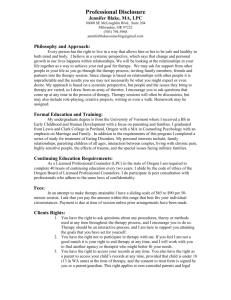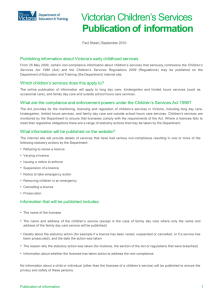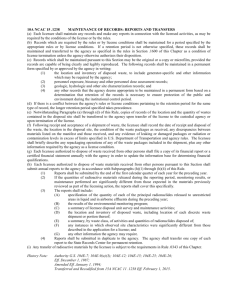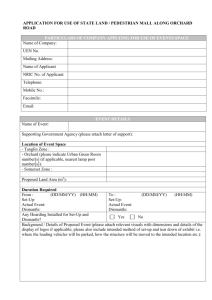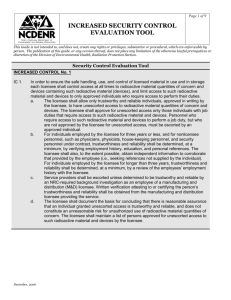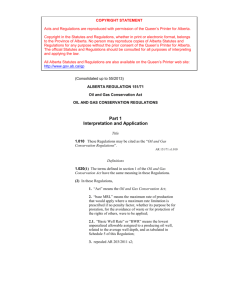Outline of requirements to commercially import new vehicles
advertisement
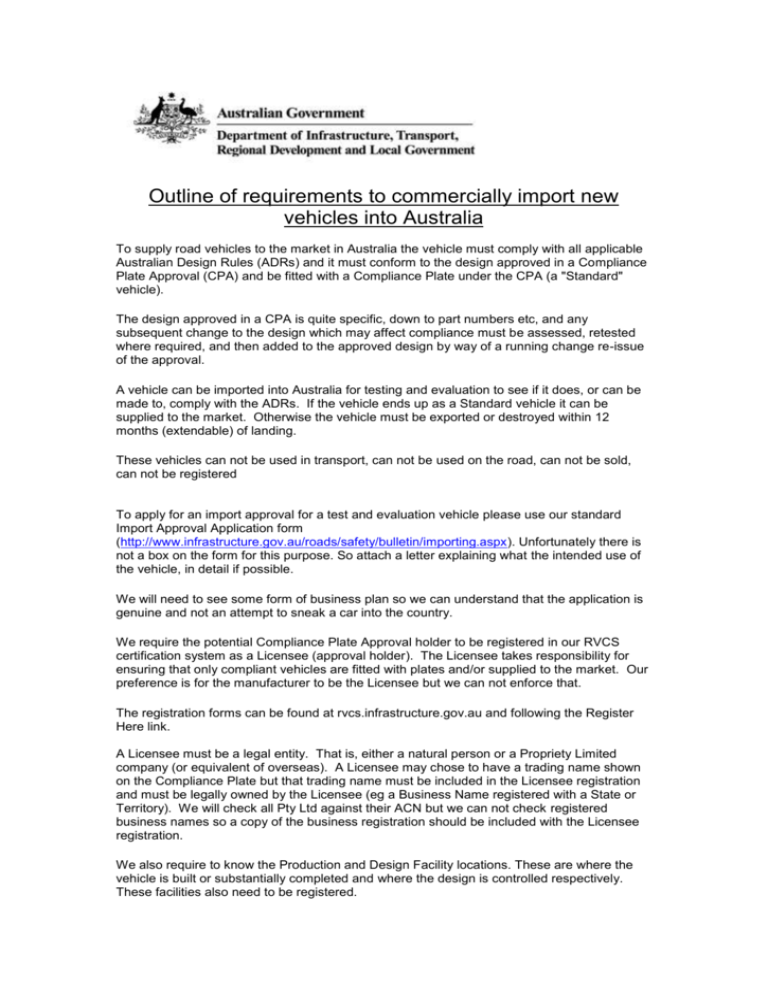
Outline of requirements to commercially import new vehicles into Australia To supply road vehicles to the market in Australia the vehicle must comply with all applicable Australian Design Rules (ADRs) and it must conform to the design approved in a Compliance Plate Approval (CPA) and be fitted with a Compliance Plate under the CPA (a "Standard" vehicle). The design approved in a CPA is quite specific, down to part numbers etc, and any subsequent change to the design which may affect compliance must be assessed, retested where required, and then added to the approved design by way of a running change re-issue of the approval. A vehicle can be imported into Australia for testing and evaluation to see if it does, or can be made to, comply with the ADRs. If the vehicle ends up as a Standard vehicle it can be supplied to the market. Otherwise the vehicle must be exported or destroyed within 12 months (extendable) of landing. These vehicles can not be used in transport, can not be used on the road, can not be sold, can not be registered To apply for an import approval for a test and evaluation vehicle please use our standard Import Approval Application form (http://www.infrastructure.gov.au/roads/safety/bulletin/importing.aspx). Unfortunately there is not a box on the form for this purpose. So attach a letter explaining what the intended use of the vehicle, in detail if possible. We will need to see some form of business plan so we can understand that the application is genuine and not an attempt to sneak a car into the country. We require the potential Compliance Plate Approval holder to be registered in our RVCS certification system as a Licensee (approval holder). The Licensee takes responsibility for ensuring that only compliant vehicles are fitted with plates and/or supplied to the market. Our preference is for the manufacturer to be the Licensee but we can not enforce that. The registration forms can be found at rvcs.infrastructure.gov.au and following the Register Here link. A Licensee must be a legal entity. That is, either a natural person or a Propriety Limited company (or equivalent of overseas). A Licensee may chose to have a trading name shown on the Compliance Plate but that trading name must be included in the Licensee registration and must be legally owned by the Licensee (eg a Business Name registered with a State or Territory). We will check all Pty Ltd against their ACN but we can not check registered business names so a copy of the business registration should be included with the Licensee registration. We also require to know the Production and Design Facility locations. These are where the vehicle is built or substantially completed and where the design is controlled respectively. These facilities also need to be registered. If the Licensee is not the same organisation as the manufacturer/design facility we need to know what arrangements exist to ensure that all design changes which may affect compliance are advised to the Licensee for review. The Licensee may choose to make the decisions on retest etc or merely to confirm the decision made by the Design facility. These arrangements and the registration numbers need to accompany the application for import approval. A Licensee has access to our electronic forms software which is used to make an application for CPA and to submit evidence of compliance. The evidence is a summary of the test reports created during the testing against the ADR requirements. Testing can be conducted wherever the Licensee chooses as long as the test facility is competent and registered with us for the ADR in question. Test facility registration does not infer any qualification of the facility. We use the registrations to select facilities and Licensees for audit. The list of ADRs applicable to a vehicle can be found at rvcs.infrastructure.gov.au and following the link to ADR Applicability Tables. The ADR vehicle categories and the ADRs themselves can be found at rvcs.infrastructure.gov.au and follow the link to Australian Design Rules (categories are in Definitions). The Administrator's Circulars provide additional information on certification and are at rvcs.infrastructure.gov.au and follow the link to Administrator’s Circulars. Many of the ADRs contain the same requirements as the United Nations ECE Regulations. In these cases and some other ADRs the technical requirements of the ECE Regulation are accepted as an alternative standard. In these cases an approval issued to the ECE regulation can be used to demonstrate compliance. UN ECE approval numbers start with an “E”. There are also European Union Directive approvals, the approval numbers for these start with an “e”. As Australia is not part of the European Union we cannot accept EU Directive approvals. However, in many cases the EU Directive and the ECE approval have the same, or very similar, requirements. If the EU Directive requirements match the ADR requirements then the test report from the EU Directive approval test can be used to complete our summary of evidence form. Typically we take about 5 days to register a facility or Licensee. Our service charter for CPA applications is 32 days. That is, we will make a decision about the application within 32 days. That decision may be to request additional information, clarification etc. When the response is received the 32 days starts again. We process submission is the date order they were received, not the date order the initial application was received. How long it takes to get an approval depends on the quality and completeness of the application. Further inquiries should be sent to rvcs@infrastructure.gov.au
